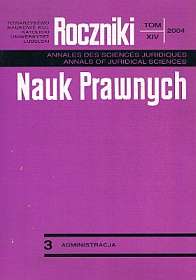Some Legal Problems of the Organisation and Functioning of a Joint-Stock Company
Abstract
The joint-stock company gives rise to a series of legal-organisational problems. The joint-stock company, being an assets company, is more formalised than a limited liability company. It is called “most capital of all capital companies”. Contrary to a limited company in principle there are no features characteristic of personal companies. The institutional role of collaborators is in this company less important than in the limited company. All the basic functions both inside and outside the joint-stock company are fulfilled by its organs.
The joint-stock company is an organisational structure convenient for a big-scale business. This is because the law has provided a way to gather assets from many subjects.
The law many times pinpoints the joint-stock company as principally the only form to do business. This is, for instance, in the case of banking (art. 12 of the bank law) and insurance (art. 11 of the law about insurance, with regard to pension companies, see art. 27 and further laws on the organisation and functioning of pension funds). See also art. 3 of the law on national investment funds and their privatisation, art. 26 of the law on radio and television. In the science of law one may hear an objection that subtypes of joint-stock companies have multiplied. The laws that point to a joint-stock company as a form to do business very often introduce some specific principles of organisation or functioning of those companies.
Copyright (c) 2004 Roczniki Nauk Prawnych

This work is licensed under a Creative Commons Attribution-NonCommercial-NoDerivatives 4.0 International License.


